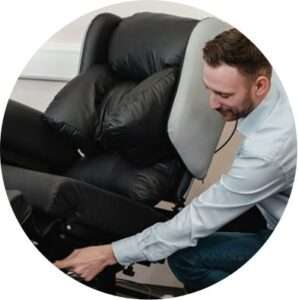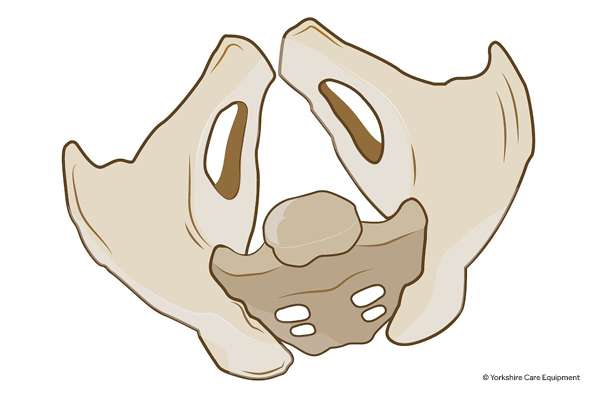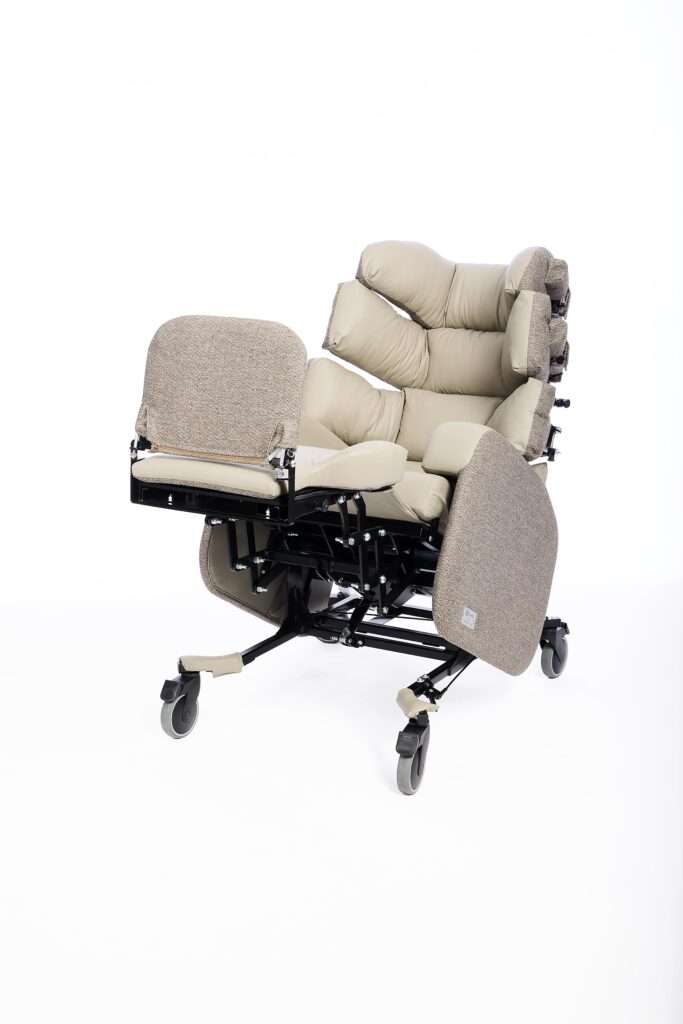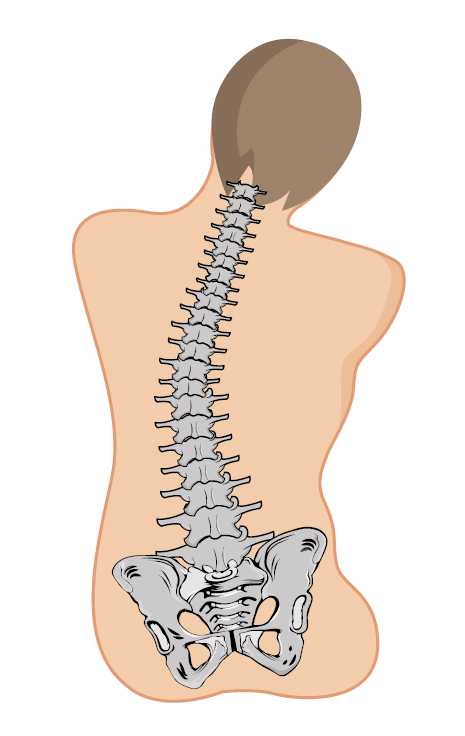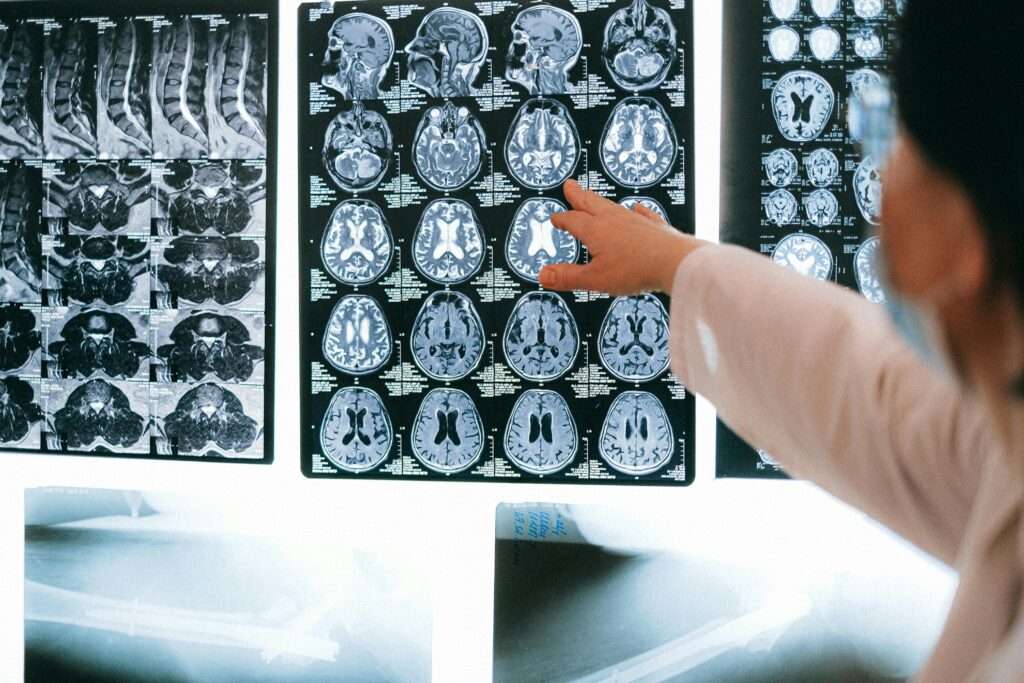Maintaining good posture whilst sitting is key. Poor posture is associated with all sorts of health problems, from general aches and pains to bladder and breathing problems. For people with postural abnormalities, like posterior pelvic tilt, it can be difficult for them to achieve proper positioning in a chair. So, what can be done to prevent posterior tilt when sitting?
Specialist seating can help to support any postural abnormalities, provide comfort, and prevent postural problems from getting worse.
In this guide, we’ll look at posterior pelvic tilt sitting, its possible causes, and how specialist seating can help.
Jump straight to…
What is ‘normal’ posture?
Before we get into the details of posterior tilt, it’s important to understand what normal posture looks like.
We’ve written about improving posture a lot over the years. So, we acknowledge that good posture can look different for different people.
However, for a healthy person with no spinal or pelvic issues, their neutral posture should look something like this:
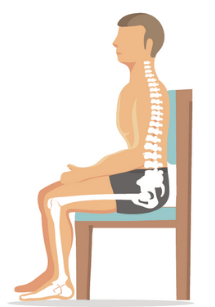
A neutral sitting position
The scientific explanation
To assess posture, we need to look at someone’s head, spine, and pelvis positioning.
Someone sat with normal posture will have…
- Their head functionally upright and aligned over the hips.
- Their spine in an upright position, with no lateral curve, just the natural “S” shape curve from the lumbar spine to thoracic spine.
- Their pelvis in a midline position with the:
- Anterior Superior Iliac Spine (ASIS) & Posterior Superior Iliac Spine (PSIS) at equal heights.
- Left ASIS & Right ASIS at equal height and depth.
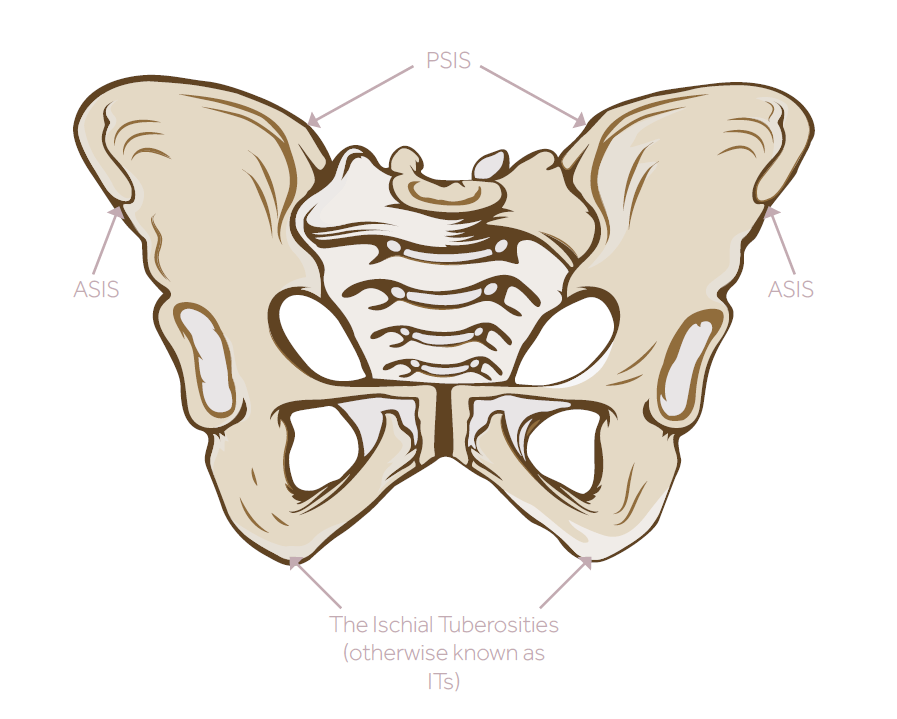
Now we know what ‘normal’ posture looks like, let’s look at how posture differs in someone with posterior tilt.
What is posterior pelvic tilt sitting?
Posterior tilt is a postural abnormality that occurs when the pelvis tilts backwards.
Healthcare professionals sometimes call it “sacral sitting”.
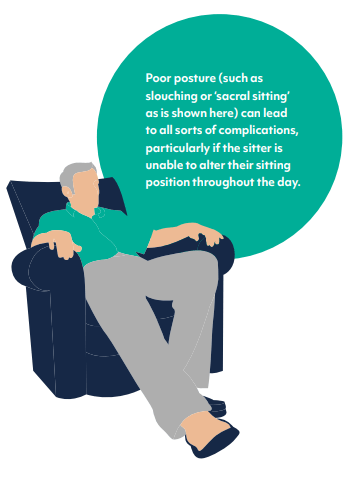
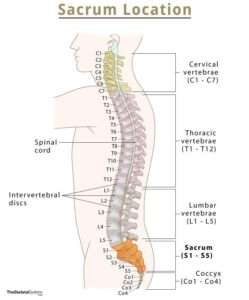
Location of the sacrum
That’s because people with posterior tilt end up sitting with their weight going through their lower back (sacrum) rather than their bottom.
DIAGNOSIS TIP: You may notice someone with posterior tilt has a C-shaped spine with rounded shoulders and their eyes looking downwards.
The scientific explanation
Posterior tilt is all about the pelvis. In medical terms, it means the PSIS is lower than the ASIS, causing the pelvis to tilt backwards.
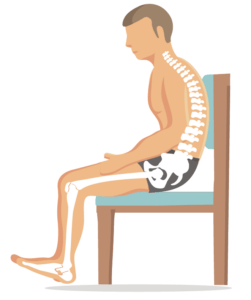
This is how someone’s spine and pelvis looks when sitting with posterior tilt
Possible causes
Obesity is a risk factor for posterior tilt, and lack of muscle tone is another common cause.
Critically, a poorly fitted chair can also cause posterior tilt! So, getting seating right can stop this abnormality developing in the first place as well as helping correct it.
There are many other risk factors for posterior tilt – Download our free Specialist Seating eBook for more details on causes.
Can specialist seating correct posterior pelvic tilt?
In short, it depends.
If someone’s posture is still flexible, then it may be possible to correct the pelvic tilt. However, if their posture is fixed, then unfortunately the abnormality is permanent.
Definition | Goals with seating | |
Flexible posture | The spine and pelvis still move | Prevent posture becoming fixed in posterior tilt |
Correct positioning back towards normal posture | ||
Fixed posture | The spine and/or pelvis will not move from their abnormal position | Accommodate the fixed posterior tilt posture |
Prevent further progression - posterior tilt can develop into more serious kyphosis if left untreated |
Chairs for people with posterior pelvic tilt
When choosing a chair for someone with posterior tilt, there are three main areas to consider — sizing, back angle, and footrests.
Adjustable seat sizing
Seat sizing is key for people with posterior tilt. Seat height, seat depth, and arm height are the most important measurements:
- If the seat depth is too high or too low, the user can slide forward.
- If the seat is too high, the user may slouch so they can rest their feet comfortably on the floor. The result is the same as with seat depth.
- If the armrests are too low, again the user can end up slouching to get comfortable.
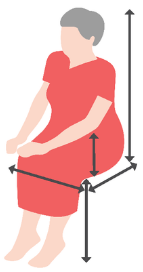
Seat height, seat depth & armrest height are crucial in seating for someone with posterior tilt. Our free seat sizing form can help you take accurate measurements
Whatever the sizing issues, the result is the same. Over time, this pressure builds up on the sacrum and causes the pelvis to tilt backwards, causing posterior tilt.
The solution is a bespoke chair that is made-to-measure, or one with adjustable sizing that can be perfectly fitted to the user.
We recommend adjustable sizing where possible. It means you can adjust the chair as someone’s posture improves, or to interchange between different users.
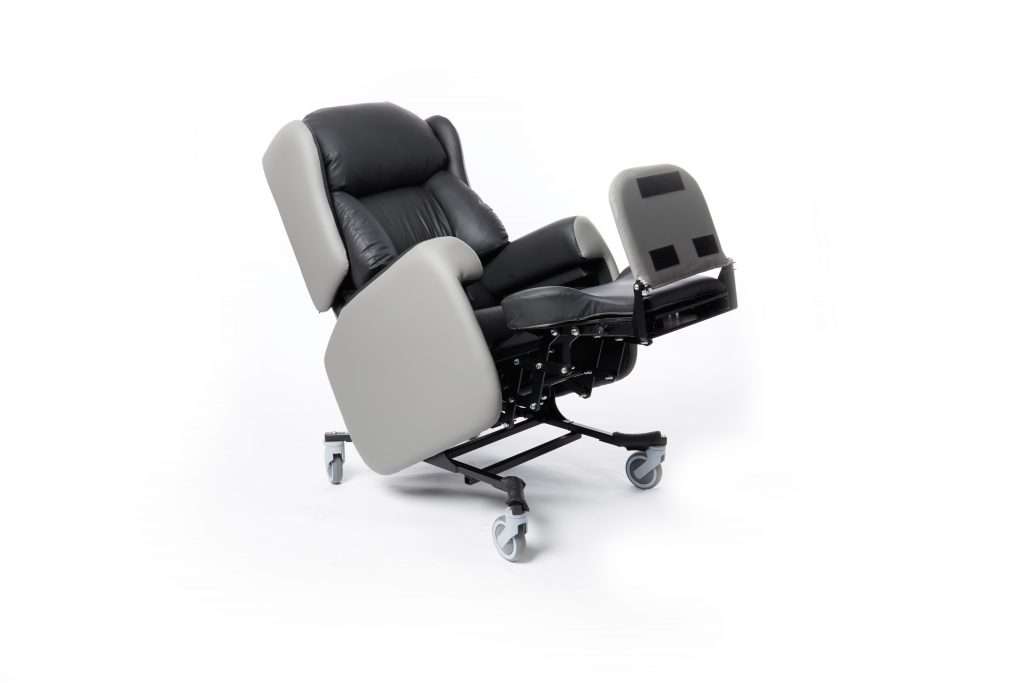
The Lento Care Chair has fully adjustable seat sizing
Adjustable back angle
If the backrest is too upright, it can impact hip flexion and cause/exacerbate posterior tilt.
Hip flexors are the muscles that allow you to bend your leg up towards your torso — as you do when you’re sitting. This movement is called flexion.
When someone is sitting for long periods of time, the hip flexors become weaker and tighter. Over time, this can cause postural problems like posterior tilt.
By opening up the back angle of a chair, you allow the hip flexors to stretch.
Having a chair that allows you to change the backrest angle throughout the day keeps the hip flexors active and helps correct posterior tilt by lengthening the muscles.
A chair with dual-motor tilt-in-space is ideal for this.
The seat and backrest initially tilt together with tilt-in-space action. The user can then open the backrest angle out further to lie back more.
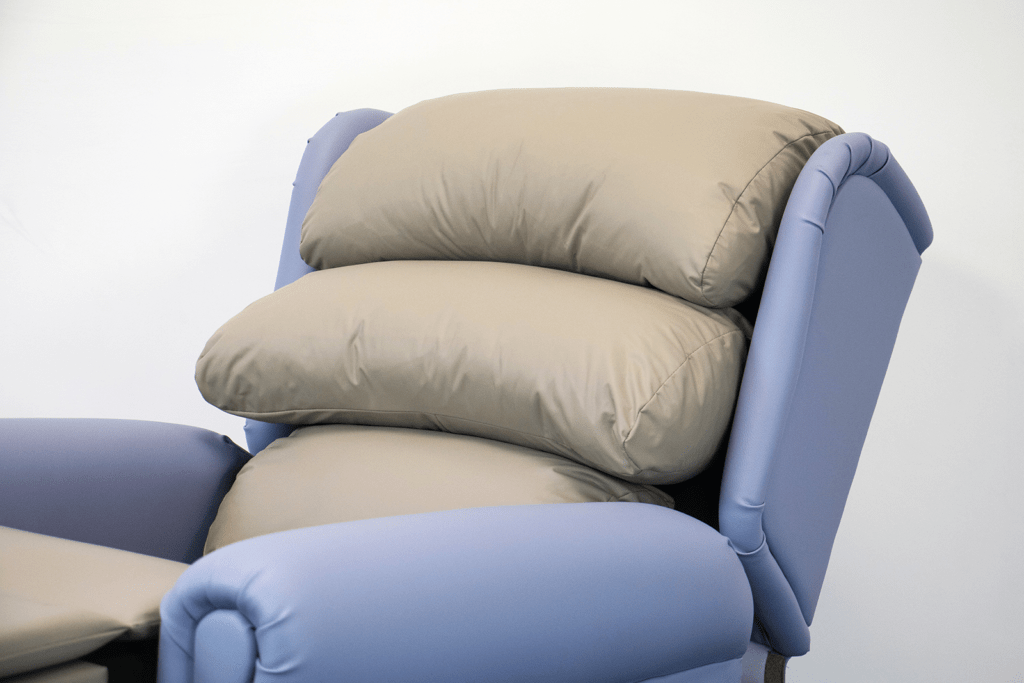
Adjustable footrest
We’ve already covered the importance of seat height for someone with posterior tilt. Their feet must be properly supported, so if you’re using a care chair with a footplate, it is equally important that it’s the right height too! Too low and the user will slouch forward. Too high and it can impact hip flexion by pushing the knees up too high.
The footrest is even more important if someone’s posterior tilt is linked to tightness in their hamstrings.
The hamstrings are a group of muscles in the back of the thigh, connecting the hip to the knee.
If tight hamstrings are an issue and leading to contractures, consider a negative angle footrest. That’s a footrest that folds back under the seat. This can help to stretch the hamstrings and reposition the pelvis, reducing posterior tilt.
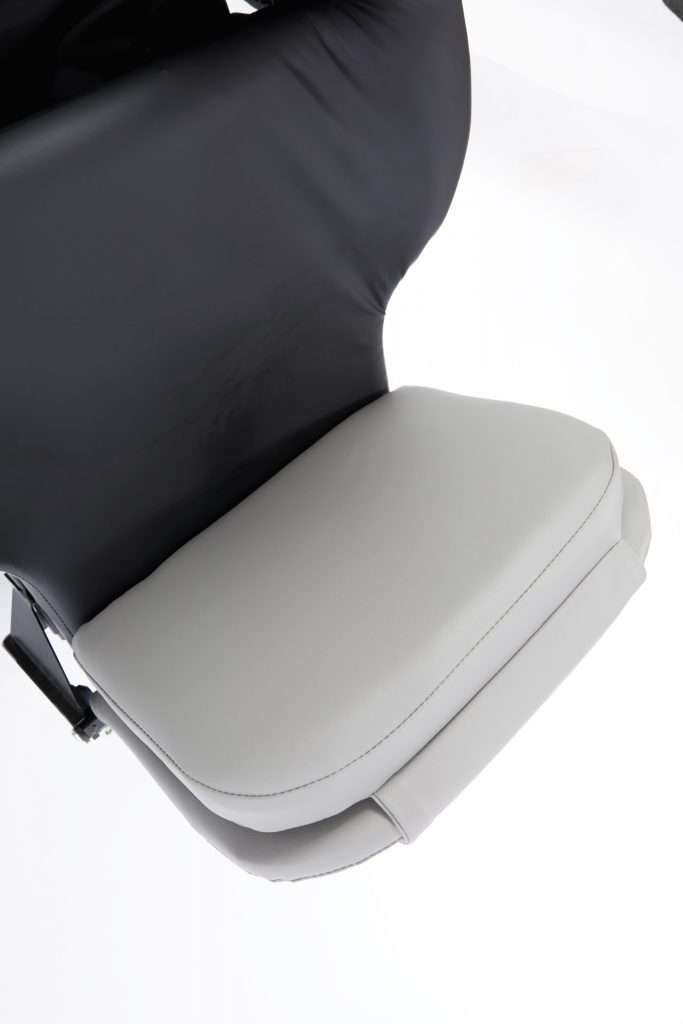
The footrest on the Lento Care Chair can be readjusted to give a negative leg angle
Adjustability is key
You might have noticed a recurring theme here — adjustability!
To prevent and treat posterior tilt, seating must be adjusted to fit the individual user. There’s no one-size-fits-all solution.
Recommended chairs for people with posterior pelvic tilt
We have two top choices for posterior tilt — a Made-to-Measure Riser Recliner and the Lento Care Chair. Both chairs can offer exceptional comfort and support for postural abnormalities. Seat sizing can be tailored to the individual user and the backrest angle can be adjusted to allow flexion of the hip joints.
The best option comes down to how mobile the person is. For someone with posterior tilt who is still able to stand and walk, go for the Rise and Recline Chair. For someone who is immobile and requires hoisted transfers, go for the Lento Care Chair instead!
Other postural abnormalities
Posterior tilt is one of many common postural abnormalities. We’ve written detailed guides on other conditions too! Take a look to see how specialist seating can help with:
- Kyphosis — Seating Recommendations
- Lordosis — Seating Recommendations
- Scoliosis — Seating Recommendations
- Pelvic Rotation — Seating Recommendations
Posture & Seating Assessment
For more advice on specialist seating and postural abnormalities, please book a free assessment!
Our specialist team have over 30 years’ experience and will be more than happy to help you.
Free & No Obligation Assessment
Frequently Asked Questions (FAQs) about Posterior Pelvic Tilt
1. What is posterior pelvic tilt?
Posterior pelvic tilt is a postural abnormality where the pelvis tilts backward, causing the lower back to flatten and the spine to form a C-shape. This often results in slouched sitting and discomfort.
2. What causes posterior pelvic tilt sitting?
Several factors can contribute to posterior pelvic tilt while sitting, including:
- Weak core and back muscles
- Tight hamstrings
- Poorly fitted seating
- Prolonged sitting without proper posture support
- Obesity or muscle atrophy
3. What are the common symptoms of posterior pelvic tilt?
- Lower back pain and discomfort
- Rounded shoulders and forward head posture
- Increased pressure on the sacrum
- Difficulty maintaining an upright position
4. Can posterior pelvic tilt be corrected?
It depends on whether the posture is flexible or fixed. Flexible posture can often be improved with proper seating and exercise. Fixed posture may require accommodations to prevent further progression and discomfort.
5. How can specialist seating help with posterior pelvic tilt?
Specialist seating is designed to support and improve posture by:
- Providing adjustable seat sizing for a better fit
- Offering adjustable back angles to encourage proper spinal alignment
- Including footrests to maintain correct leg positioning and hip flexion
6. What are the key features of a chair designed for posterior pelvic tilt?
- Adjustable seat height, depth, and armrests
- Tilt-in-space functionality for better weight distribution
- Adjustable backrest angles to support the spine
- Proper footrest positioning to prevent slouching
7. What are the best chairs for posterior pelvic tilt?
Two highly recommended options are:
Made-to-Measure Riser Recliner – Ideal for individuals who can still stand and walk.
Lento Care Chair – Best suited for those who are immobile and require hoisted transfers.
8. How does adjustability improve seating for posterior pelvic tilt?
Adjustable seating ensures the chair fits the user’s body and posture needs, preventing worsening of postural abnormalities and offering long-term comfort and support.
9. Can poor seating cause posterior pelvic tilt?
Yes, improper seat depth, height, or lack of lumbar support can contribute to poor posture and the development of posterior pelvic tilt over time.
10. Where can I get a seating assessment for posterior pelvic tilt?
Our specialist team offers free, no-obligation seating assessments to help you find the right chair for your needs. Contact us to book an assessment today!
Book a Free Seating Assessment



